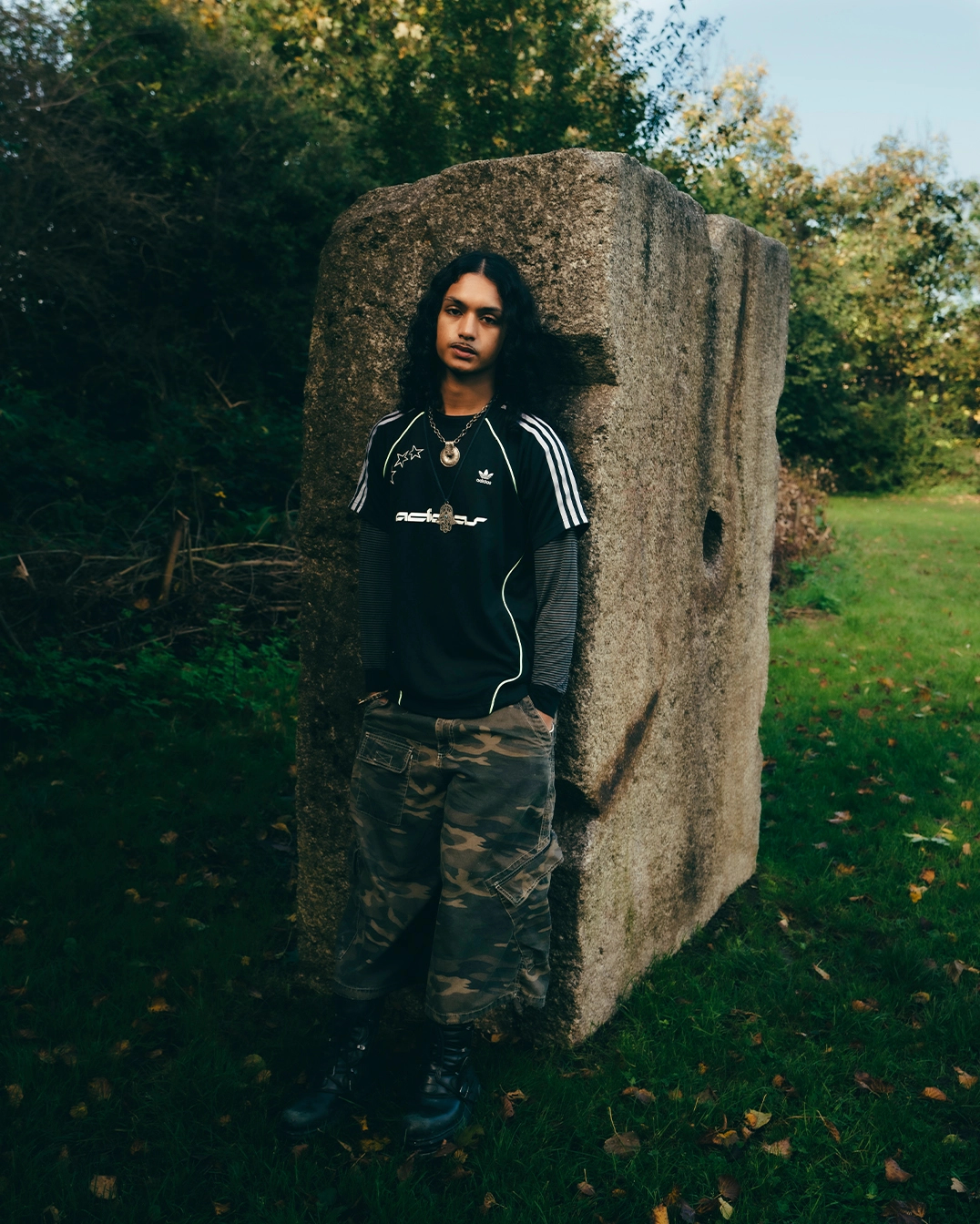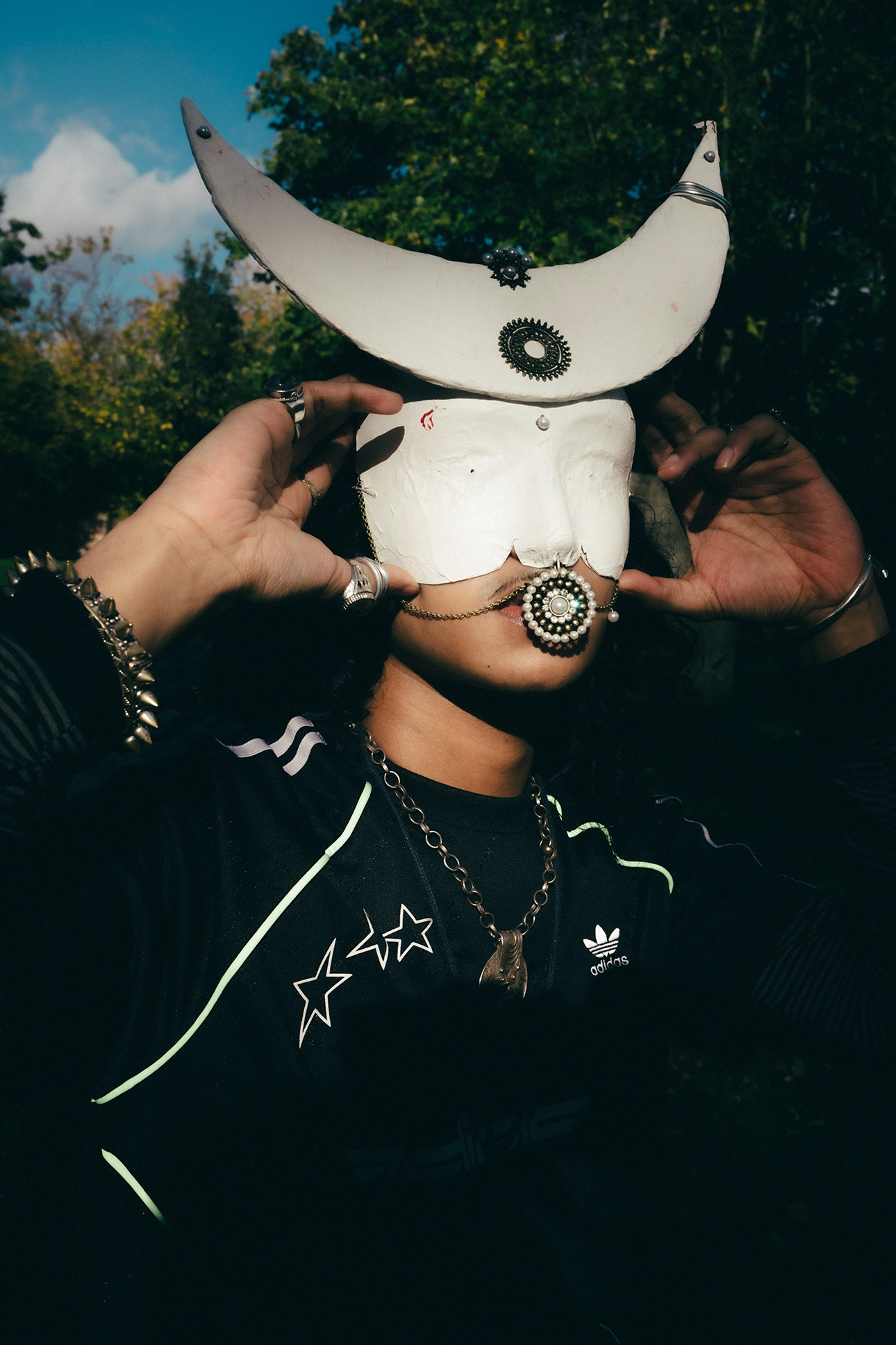Double Roles: Ace Rahman
Though modelling as a career has its doses of glitzy glamour, it is fast, demanding and fleeting. Verve speaks to four models who have sensitively expanded their repertoire and enriched their lives by simultaneously pursuing their passions for fashion and the arts
Ace Rahman, London
Mixed Media and Installation Art

Models are — and have always been — the visible face of the fashion and beauty industries. Injecting a certain je ne sais quoi into the brand identity with an ease that almost masks the pains taken to execute the vision of the creative heads, they are one of the primary draws that attract the attention of the viewers — and, by extension, the buyers. But it is well known that despite their integral function to these industries, their “shelf life” is limited.
The digital content business, driven by algorithms, is under constant pressure to produce fresh imagery, leading the fashion industry to churn out content at a hectic, unsustainable pace. The number of fashion collections presented annually has increased from two to four to, in some cases, double digits. Designers, who choose to abide by the same visual codes for more than three seasons — that is, about a year — are declared one-trick ponies by audiences online. The need to be distinctive on platforms frequented by billions drives the image makers of the fashion industry to always be on the hunt for new and, often, younger talent. Perhaps the most vulnerable casualties of this cycle are models. Many — designers, stylists, make-up artists, photographers — often have the leeway to switch up aesthetics but it’s often a matter of time before models lose their visual currency. Additionally, and ironically, being a recognisable face may also translate into losing out on the order of the day — the freshness factor — and jobs.
Interestingly, many are simultaneously following their creative interests in the arts to express their inner muse and thus wearing multiple hats. We take a deep dive into the artistic pursuits of four models in an effort to stand out in the clutter.
Excerpts from the conversation…
How did you get into modelling?
Quite unexpectedly. It started in high school when I was entering the sixth form and connecting with other creative, expressive young people in Manchester’s subcultural space. Friends would ask me to model for their college photography projects or for spontaneous shoots — and we would end up experimenting with lighting, make-up, styling and shooting in unconventional sites like bathtubs or side streets. It was purely about self-expression and fun.
As I began sharing these shoots online, art students at MMU (Manchester Metropolitan University) started reaching out for collaborations which helped me build a portfolio. A friend eventually encouraged me to apply to an agency. Once I was signed on, then everything fell into place.
Modelling as a career has undergone so many transformations over the past two decades. Do you find yourself tasked with additional responsibilities and expectations to build or sustain your modelling profile?
I think there’s pressure sometimes from the industry that wants you to want to be the next big thing and to market yourself in a way that’s commercial, palatable and fits the criteria — to put you on a road to being an influencer. But I don’t really see myself as a “career model” (I use this term to describe people who strive for success in modelling only). I’ve always said that I’m an artist first.
It’s a blessing to be able to experience the BTS (behind the scenes) of the fashion industry and I’ve learnt so much from it. It has not been that accessible for people like me — a working-class Brit-Bangladeshi kid from Longsight, Manny [Manchester]. But I direct the exposure that I get from my work in the fashion industry to my other talents and passions.
What role does social media play in your career?
It would’ve been a lot harder to find a voice and a seat at the table without social media. If I didn’t start sharing the random shoots I had done in Manchester as a teen, I wouldn’t have been discovered by other people in that city who would want to cast me for their shoots. It snowballed from there as I got older — many brands and art students, who became casting agents, hit up my agency from my page.
What are the factors that you bear in mind while positioning yourself and your work digitally?
In the creative arts, modelling and other artistic practices, there’s a notion that if you don’t document it online, it didn’t happen. It’s harder, albeit possible, to find a wider community who get your vibe without social media. Instagram went from being a place where you haphazardly do low-effort posts to a curated online portfolio for most creatives.

Are you concerned about being known more for your modelling work than your art or vice versa?
I think people engage with your work for different reasons: some are there to see your work in fashion, others are there to see your art, some are there for both. I just kind of put it all out there and see what attracts people to me.
What’s a modelling project that you loved working on?
The first time I worked for a fashion magazine, it felt surreal. I have previously mentioned it but stuff like that — being wanted in rooms like that — aren’t common for folks like me, and it made people in my family and wider community think that it’s possible to want to dream bigger.
How do the two careers feed into and augment each other?
I definitely think they do supplement each other. Modelling started as a way to explore identity in front of the camera. I saw my body as an extension of my art, the way it could mould and shape into different ways of being, although I’m blessed to be able to make money from it now. I tend to gravitate towards shoots that reflect my personal taste.
My work is about exploring connections — between people, places, ideas, and the paradigms of history, culture, and identity. At its core, it’s about play: rediscovering and reimagining these links while giving imagination a central place in my life as an adult.
What role does your Bangladeshi heritage play in your art? You have mentioned being inspired by Bengali culture from both sides of the border.
My work is influenced by a side of Bengali culture that feels whole — decolonised, unpartitioned, and rooted in a history of unity and shared traditions. I’m drawn to the way Islam and Hinduism in Bangladesh and West Bengal have influenced each other over centuries, creating something uniquely symbiotic. For me, it’s about celebrating that flow of ideas and culture, and finding ways to reflect that sense of connection and coexistence in what I create.

Can you talk about the mukhosh (mask) that you created for Sonia Abbas’s visual series? You have worked with masks extensively. What is it about masks that fascinates you?
Working with masks, like the ones I created for Sonia Abbas’s A Vague Image Of A Family Portrait, is about stepping into something beyond myself. Masks let me explore an energy or presence that isn’t tied to how I look but feels like an extension of me — something more surreal, mystical or otherworldly.
There’s freedom in that separation. In performance, the mask creates this space where I’m no longer just myself; I’m channelling something outside of me, it’s almost like I’m stepping into another realm. It’s similar to modelling in the sense that I’m embodying something but it’s less about representing myself and more about transformation. That’s what keeps me coming back to masks — they’re a way to become something new and tell a story that’s bigger than me.
Could you talk about your textile work, especially the red eight-pronged star?
These textile works are part of my explorations under Madeulook, my design and arts studio. The star motif, a common thread in textiles linking South Asia, Persia and the Islamic world, was used as a backdrop for my installation and sound performance Art Is A Weapon of Mass Creation, where I played pomegranates on a harp.
The other untitled piece is a series for my final graduation show at CSM (Central Saint Martins) that explores the connections between online culture, folklore and irony through physical craft and design.
Do you ever feel the need to tailor your art to be better understood by people outside your cultural milieu, perhaps through expositions or additional supplements?
I don’t create with the goal of being universally understood. My work is a reflection of my ideas, tastes and experiences — it’s about expressing myself honestly rather than tailoring it to fit anyone else’s expectations. I’ve found that it naturally resonates with its own niche community, especially online, where people connect with it in their own way. That organic connection feels far more meaningful to me than trying to explain or simplify it for others.
Working with art that has a non-Eurocentric perspective can expand the viewer’s understanding of the world. That being said, do you ever worry about your practice being pigeonholed as a token diversity person from South Asia?
I’m constantly growing as an artist, and my work is a reflection of my experience, but not in the way that’s often expected or stereotyped. I don’t feel the need to exoticise or explain cultural elements for them to be recognised as South Asian art. It’s simply South Asian because I created it, and that’s enough.
If others try to pigeonhole my work, that’s their limitation, not mine. I make art that’s true to who I am and the ideas I want to express, and if it doesn’t fit into their narrow expectations, that’s a reflection of their understanding, not my practice.